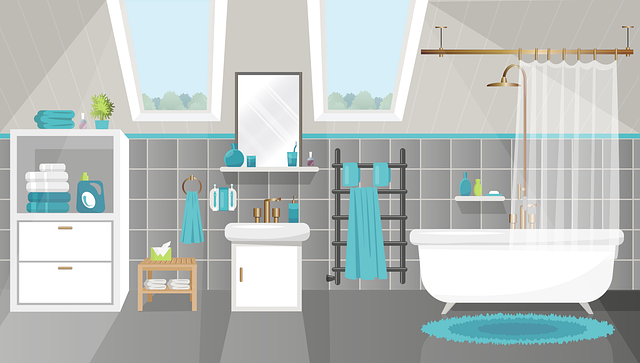Bathroom plumbing leaks are common due to various issues like faulty fixtures, clogged drains, improper installation, aging pipes, and misaligned fittings. Regular inspection is vital to catch problems early, as hidden leaks can cause significant water damage. DIY repairs for minor leaks involve shutting off water supplies and replacing parts, but complex issues require professional plumbers for accurate diagnosis and repair. Maintenance routines, including regular checks, tightening connections, using eco-friendly cleaners, and insulating pipes, prevent leaks and protect bathroom integrity. Selecting high-quality materials ensures lasting repairs. Regular monthly maintenance is crucial to maintain healthy plumbing and avoid costly damage.
“Leaky faucets, pipes, or walls—no bathroom owner wants to deal with these pesky issues. Understanding common causes and early signs is key to preventing major plumbing disasters. This comprehensive guide tackles everything from identifying subtle leak indicators to choosing the right repair materials for long-lasting solutions.
Learn how to navigate complex leaks behind walls or under sinks, follow our step-by-step DIY repairs, and know when professional help is necessary. We also break down costs, offer maintenance tips, and emphasize the importance of proactive measures for optimal bathroom plumbing health.”
Understanding Common Bathroom Leak Causes
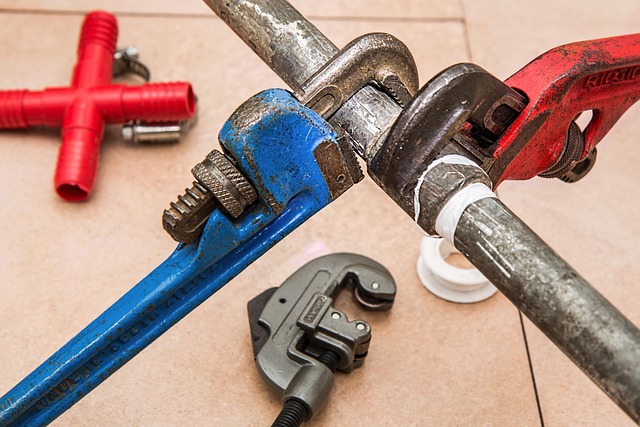
Leaks in bathrooms are a common issue, often caused by various factors related to bathroom plumbing. One of the primary reasons is faulty or worn-out fixtures, such as toilets, faucets, or showerheads. Over time, these components can develop cracks or seal failures, leading to water leaks. Another frequent cause is clogged drains, which can create excessive pressure and result in pipe damage or joint separations, causing leaks.
Improper installation or aging plumbing systems are also significant contributors. Old pipes might become brittle and prone to bursting, especially during extreme temperature changes. Additionally, misaligned or poorly fitted fixtures can lead to leaks at connections. Understanding these common causes is the first step towards effective leak repair, ensuring a well-maintained bathroom and avoiding further damage.
Identifying Signs of a Leaking Bathroom Pipe
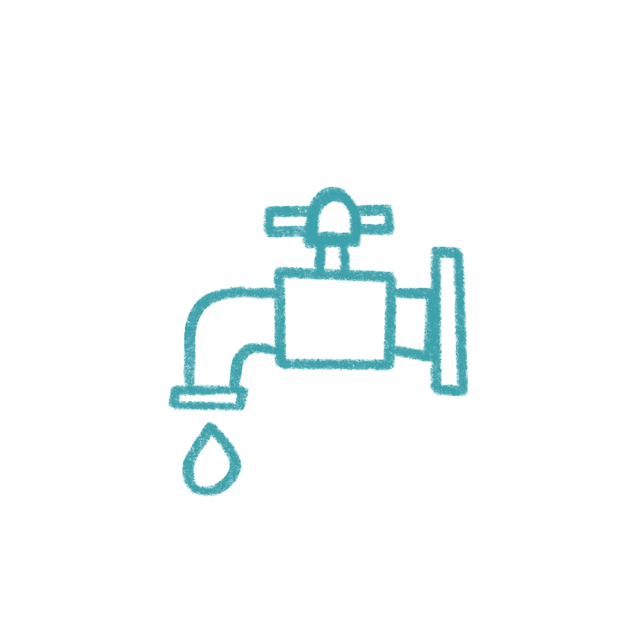
Leaking bathroom pipes can often go unnoticed, but there are distinct signs that indicate a problem within your bathroom’s plumbing system. One of the most common symptoms is an increase in water bills with no apparent reason. This could suggest a hidden leak somewhere along the pipelines. Additionally, keep an eye out for discolored or peeling paint on walls and ceilings near sinks, tubs, or toilets—a telltale sign that moisture has invaded these areas.
Other indicators include soft or bulging spots on the floor, which might indicate water damage, and musty odors coming from corners or crevices, indicating mold growth due to persistent leaks. Regularly inspect your fixtures for any signs of corrosion or rust, especially behind faucets and valves, as these can be early indicators of a leaking pipe. Addressing these issues promptly is crucial to avoid further damage and costly repairs related to bathroom plumbing.
Locating the Source: Leaks Behind Walls and Under Sinks

Locating the source of a leak in your bathroom can be a challenging task, especially if it’s lurking behind walls or under sinks. Many leaks go unnoticed until water damage becomes evident. To tackle this issue effectively, start by checking for common indicators such as dampness on walls, peeling paint, or mold growth. These visual cues might provide valuable clues about the leak’s origin.
For hidden leaks, turn off the main water supply to your house and then check the water meter. If it continues to spin, there’s a good chance you have a leak somewhere within your bathroom plumbing system. Visual inspection of pipes behind walls or under sinks can reveal damage or cracks. Sinks with persistent drips are another clear sign that attention is needed.
Repairing Leaks: A Step-by-Step Guide for DIYers

Repairing leaks in your bathroom is a common home maintenance task that many DIYers can tackle with the right tools and some basic knowledge of bathroom plumbing. Start by turning off the water supply to the affected fixture. This is usually done by locating and closing the shut-off valves beneath the sink or bathtub. Next, assess the source of the leak—it could be a broken washer, faulty O-ring, or corroded pipes. For smaller issues like a loose washer, replacing it is often as simple as unscrewing the old one and installing a new one.
More complex leaks, such as those involving pipes, might require soldering or threading to repair. Have all necessary tools ready, including pliers, screwdrivers, and replacement parts. If you’re unsure about any step or dealing with a significant leak, consider consulting a professional plumber for guidance or assistance. Regular maintenance, like checking fixtures and pipes for any signs of damage or wear, can help prevent leaks from occurring in the first place.
When to Call a Professional Plumber for Complex Leaks
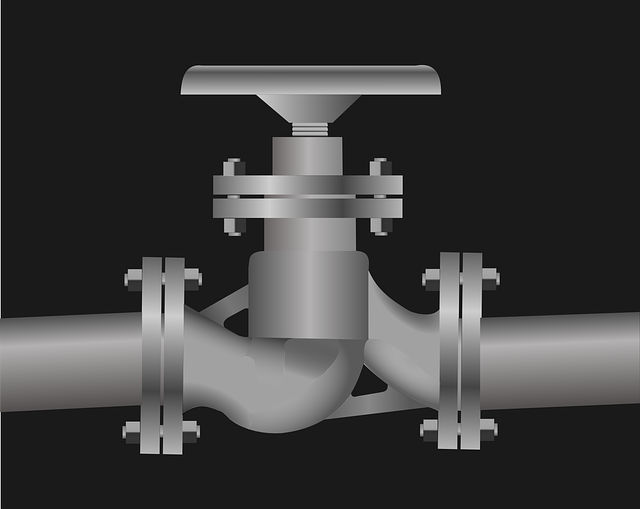
If a leak in your bathroom is causing minor inconvenience, like a slow drip from the faucet or a slightly wet spot around the toilet, it might be tempting to tackle it yourself. However, when the situation becomes more complex—with persistent and severe leaks that show no sign of stopping, involve multiple fixtures, or lead to significant water damage—it’s time to call in a professional plumber.
Complex bathroom leaks often indicate issues with the plumbing system beyond simple repairs. These could be related to faulty pipes, damaged valves, or even hidden problems within the walls. A seasoned plumber has the expertise and tools needed to diagnose these issues accurately. They can also prevent further damage by quickly fixing the leak, ensuring your bathroom remains a dry and safe space while saving you costly repairs down the line. When it comes to bathroom plumbing, prioritizing professional assistance for complex leaks is key to maintaining a comfortable and functional living environment.
Types of Bathroom Leak Repairs and Their Costs

When it comes to bathroom leak repairs, there are several types of issues and solutions that homeowners might encounter. Identifying the specific problem is crucial for effective fixing. Common bathroom leaks can originate from fixtures like faucets, showerheads, or toilets, as well as from pipes under the sink or behind walls.
The cost of these repairs varies widely based on the type and severity of the leak. Simple faucet or showerhead replacements usually involve low-cost parts and labor, ranging from $100 to $300. More complex issues like pipe leaks might require professional plumbing services, costing between $500 and $2000 or more, depending on the extent of the damage and the number of pipes involved. Bathroom plumbing repairs are essential for maintaining a functional and safe living space, so addressing leaks promptly can prevent further damage and save on potential water waste and higher repair bills.
Preventive Measures to Stop Future Plumbing Disasters
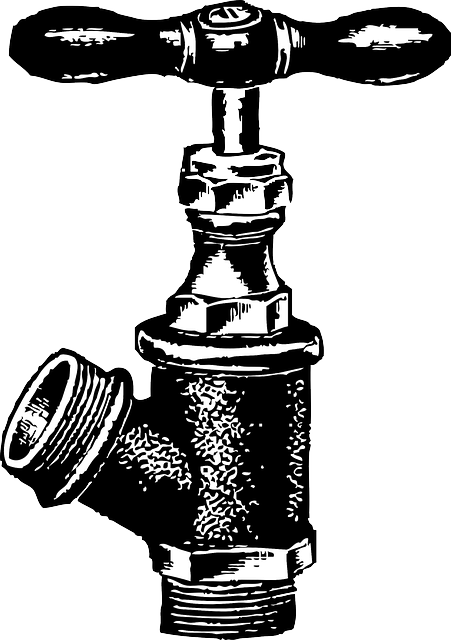
To prevent future plumbing disasters in your bathroom, regular maintenance is key. Start by inspecting your pipes and fixtures for any signs of wear or damage. Tighten loose connections and replace worn-out parts, such as washers or O-rings, to avoid leaks. Additionally, consider using water-efficient fixtures to reduce the strain on your plumbing system and lower your water bills.
Regular cleaning can also help maintain optimal bathroom plumbing health. Clear drainpipes of hair and other debris to prevent clogs, and use natural or enzymatic cleaners instead of harsh chemicals to protect pipes and promote a healthier environment. By taking these preventive measures, you’ll significantly reduce the risk of costly and inconvenient leaks in your bathroom.
Choosing the Right Materials for Long-Lasting Repairs
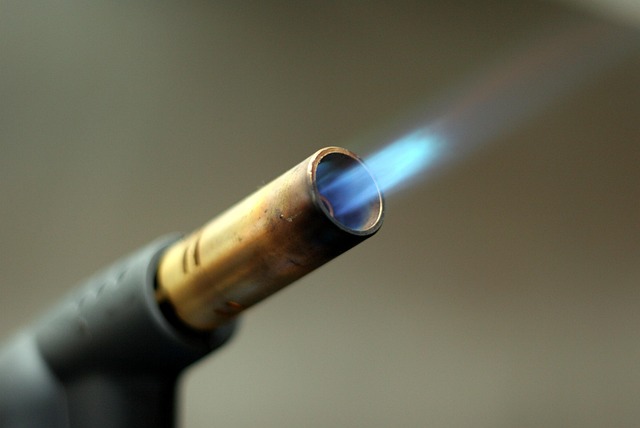
When it comes to bathroom leak repair, selecting the appropriate materials is half the battle won. The key to long-lasting fixes lies in choosing products that are compatible with bathroom plumbing and can withstand the unique environmental conditions of this space. Water exposure, fluctuating temperatures, and constant humidity require materials that offer resilience and flexibility without compromising strength.
High-quality, durable caulk and sealants designed specifically for bathroom use are essential. These products create a watertight barrier around fixtures and joints, preventing water intrusion and minimizing the risk of future leaks. Additionally, using corrosion-resistant metal fittings and pipes ensures that the repair is not only effective but also long-lasting, maintaining the overall integrity of your bathroom’s plumbing system.
Maintenance Tips to Keep Your Bathroom Plumbing in Top Shape
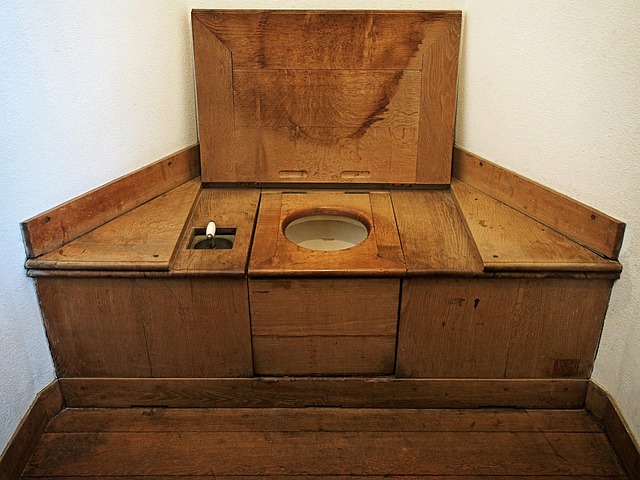
Regular maintenance is key to keeping your bathroom plumbing in top shape and preventing costly leaks. Start by inspecting all fixtures, pipes, and fittings for any signs of damage or corrosion on a monthly basis. Addressing issues early can stop what might seem like minor problems from escalating into major leaks.
Keep an eye out for unusual noises coming from your pipes, as these could indicate a potential blockage or wear and tear. Using natural cleaning agents like baking soda and vinegar to clear clogs is an eco-friendly and cost-effective way to maintain your plumbing system. Additionally, insulating exposed pipes in colder climates can prevent them from freezing, which is a common cause of bathroom leaks.
